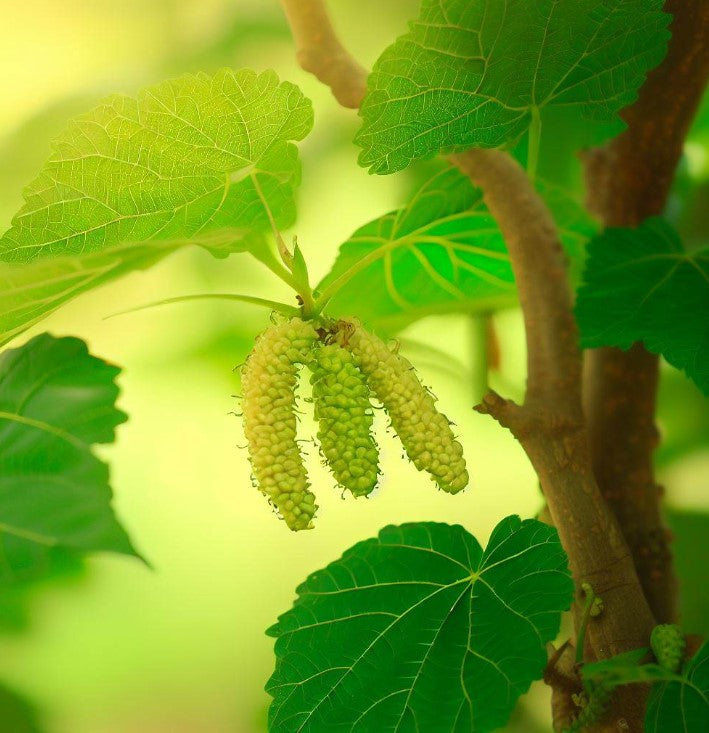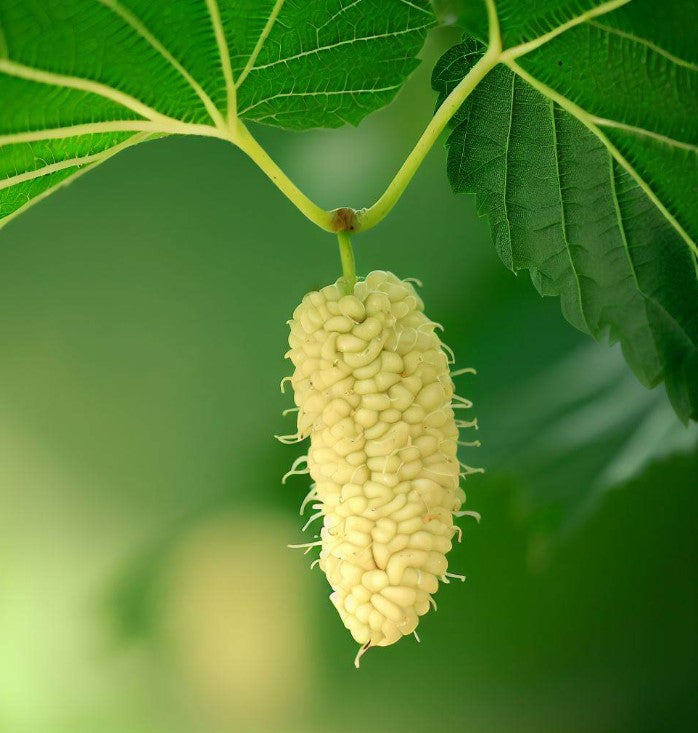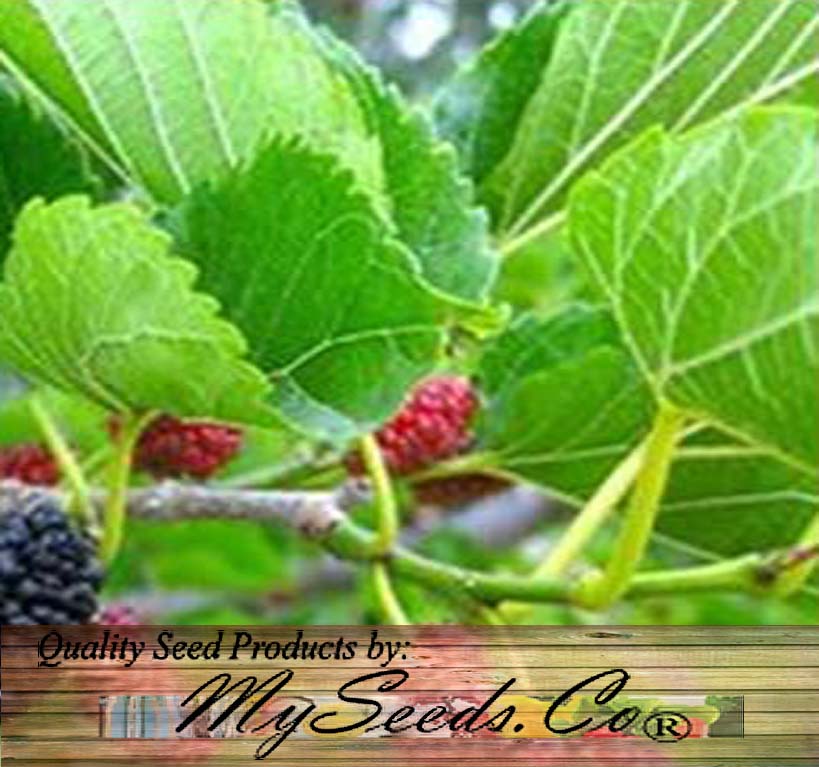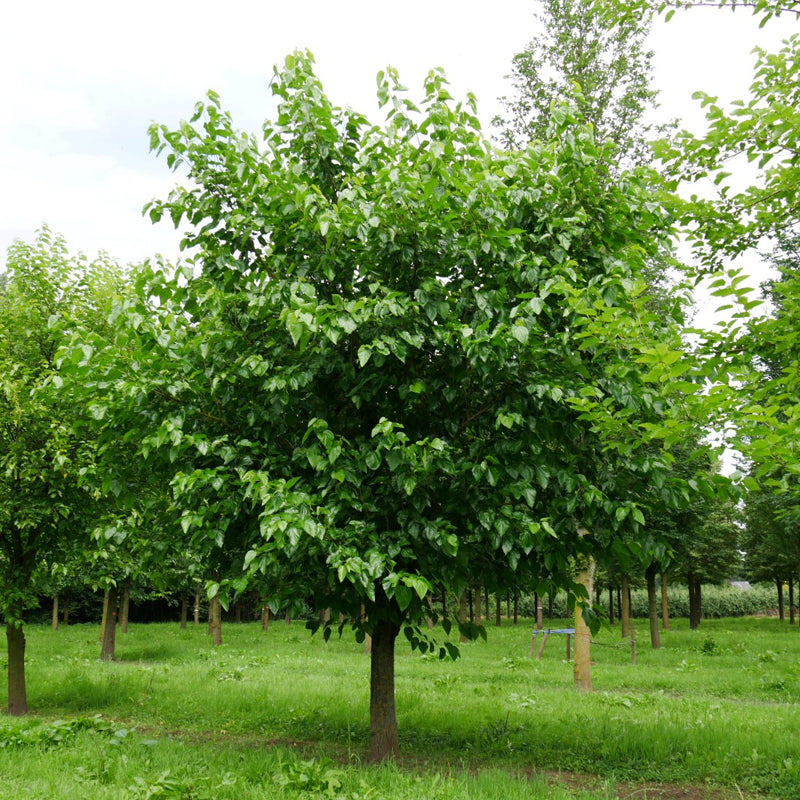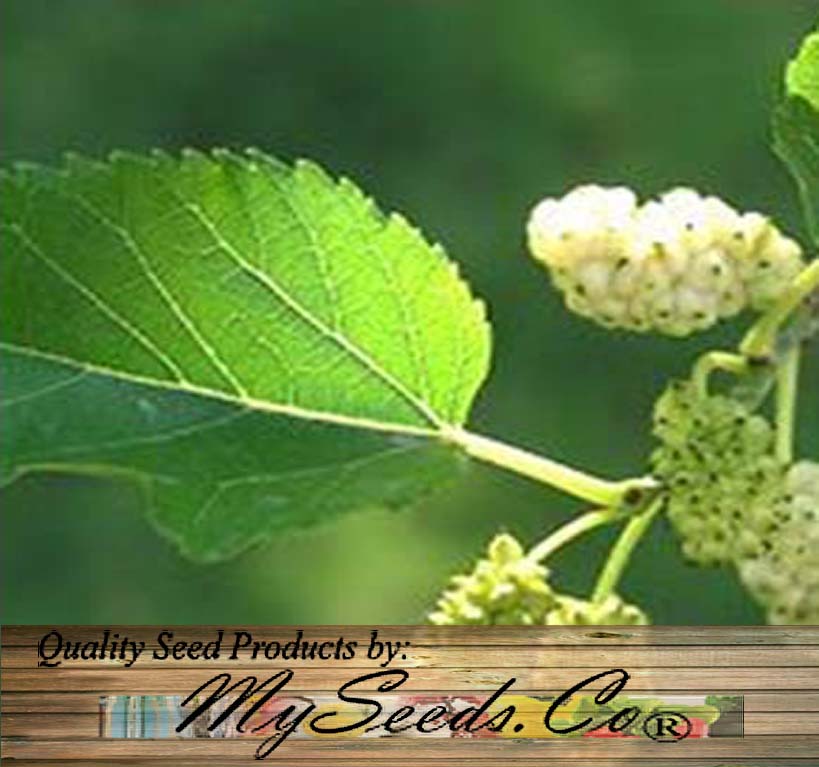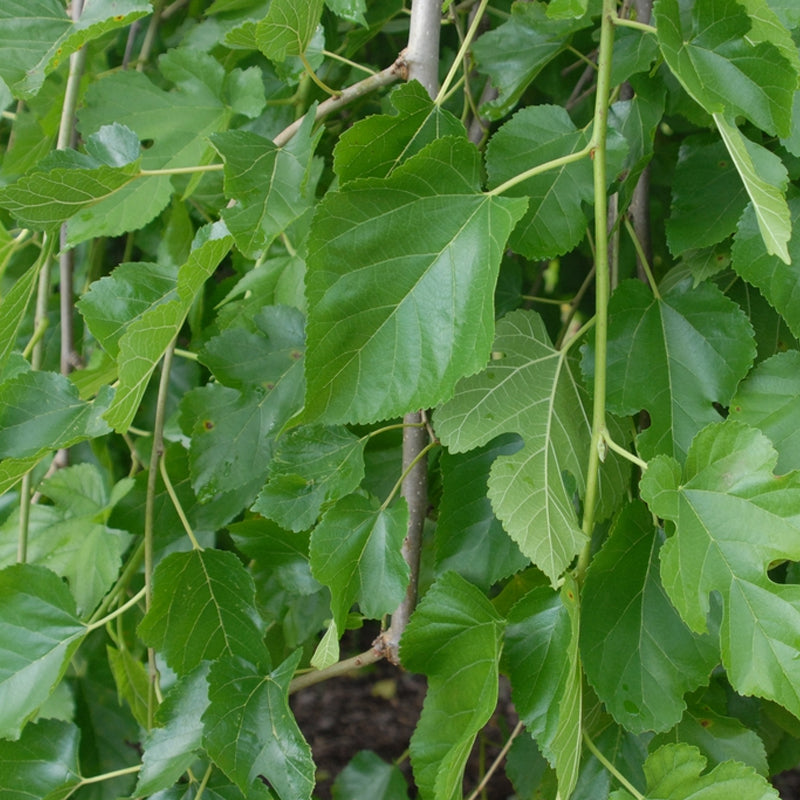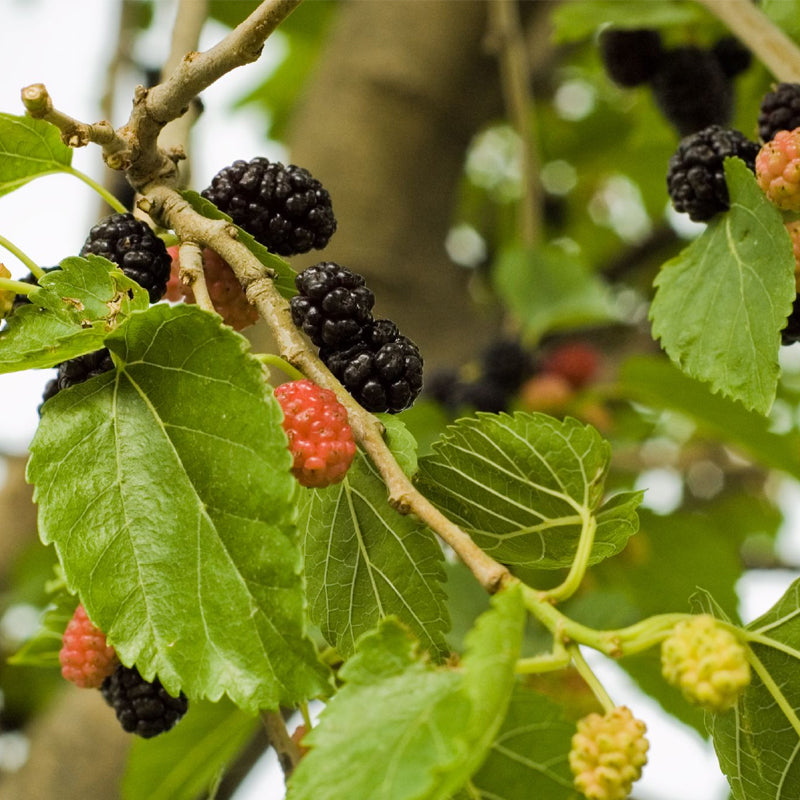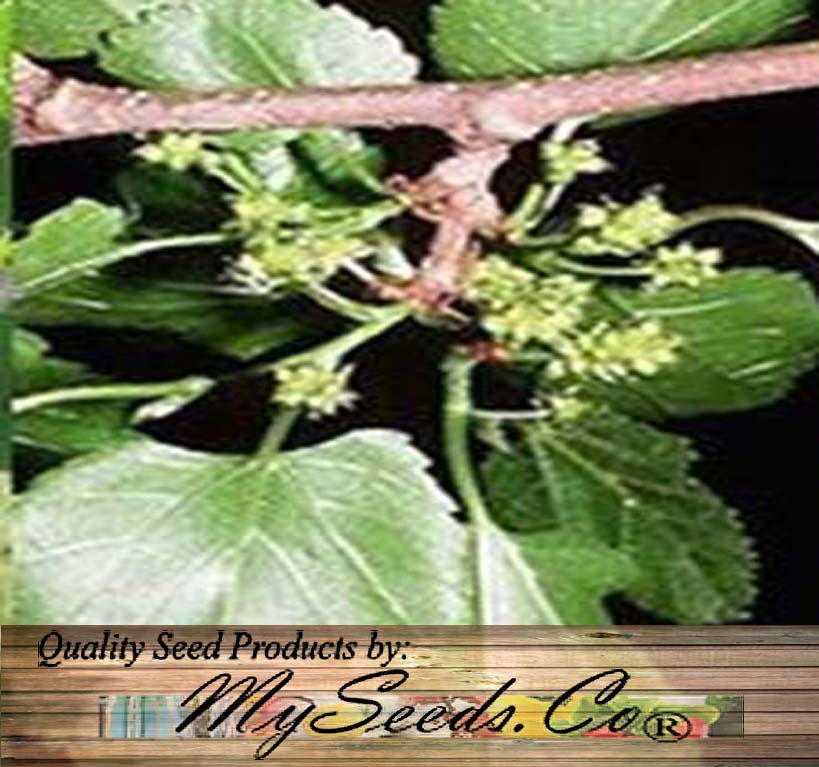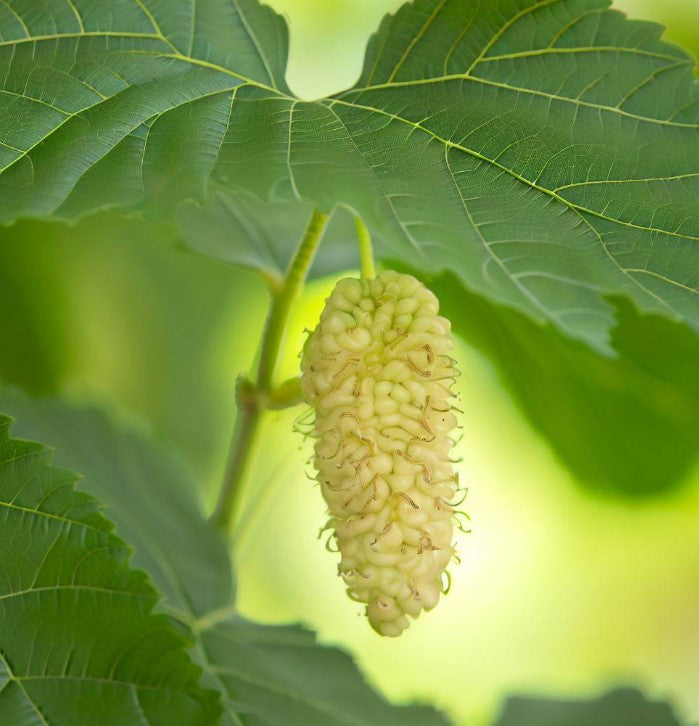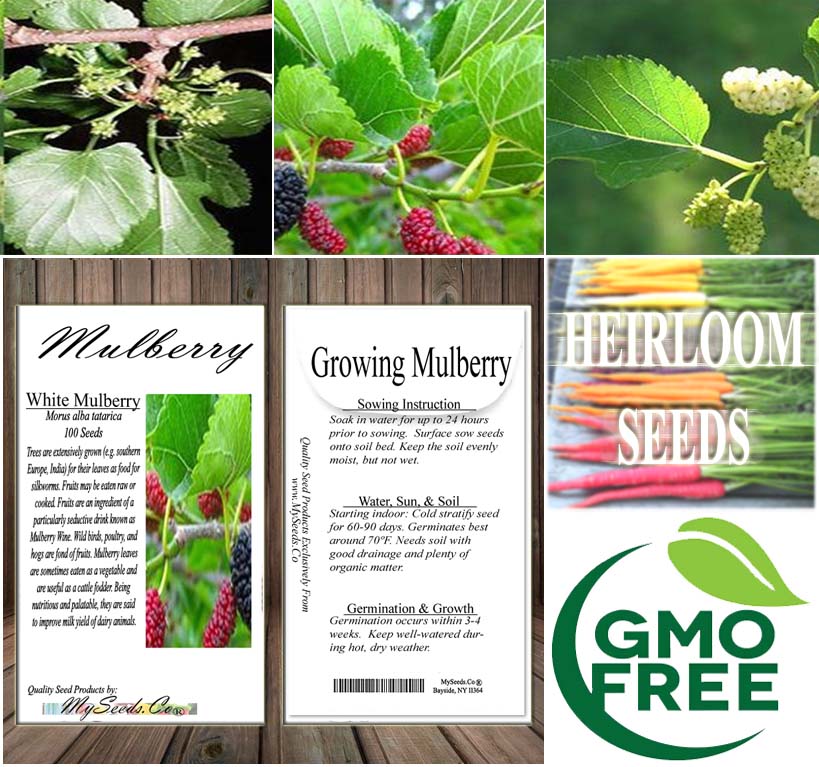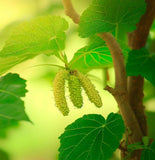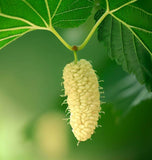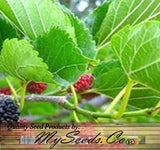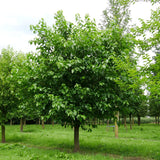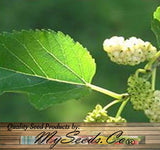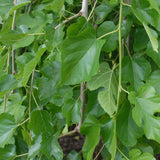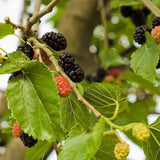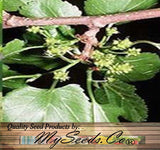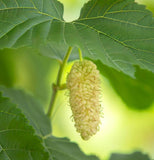Morus alba (White Mulberry)
Morus alba (White Mulberry) is a deciduous tree belonging to the Moraceae family. It is native to China but has been widely cultivated in various parts of the world for its fruits and leaves. The White Mulberry is a medium-sized tree that can reach a height of 30 to 50 feet (9 to 15 meters) at maturity. It has a spreading canopy with a rounded crown and slender branches. The bark is light gray or tan in color and develops fissures as the tree ages.
Leaves: The leaves of the White Mulberry are alternate, simple, and often lobed or serrated. They are typically heart-shaped or ovate with a glossy appearance. Unlike the Black Mulberry, the leaves of the White Mulberry are primarily green but can sometimes have a whitish or silvery underside.
Fruits: The White Mulberry produces small, cylindrical or elongated fruits that can vary in color from white to pink, red, or black, depending on the variety. The fruits are sweet and juicy, though not as flavorful as the fruits of the Black Mulberry. They are edible and can be eaten fresh or used in jams, jellies, and other culinary preparations.
Habitat: White Mulberry trees are adaptable to various climates and have been widely cultivated in different regions around the world. They prefer full sun and well-drained soil. The trees can tolerate a wide range of soil conditions and are relatively drought-tolerant.
Silk Industry: White Mulberry trees are particularly significant in the silk industry. They are the primary food source for silkworms, which are used in the production of silk. The leaves of the White Mulberry are highly nutritious for silkworm larvae, making the tree an essential part of sericulture.
The White Mulberry (Morus alba) is a versatile tree that offers both ornamental value and significance in sericulture. While its fruits may not be as flavorful as the Black Mulberry, the tree's attractive foliage and adaptability make it a popular choice for landscaping and cultural practices in many parts of the world.
Botanical Name : Morus alba
Common Name : White Mulberry
Height : 50 ft
Spread : 25 ft
Germination Info : Seed requires 90-120 days cold moist stratification
Hardiness zone : 6+
Average seed per ounce : Approx. 12500

